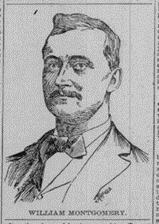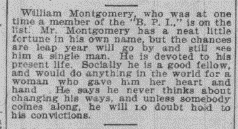Leap Years are not really that odd, despite the extra day added to the end of February there’s not much else to make it different except for the rather sexist tradition of women being “allowed” to propose marriage to men. A long standing, and multicultural tradition was that during the Leap Year, although some traditions limited it to the extra day, February 29th, women could propose marriage to men. Due to the oddity of the year, having an extra day, the day that does not normally appear in a calendar, women could propose to men. Because it was in fact such an oddity – women proposing to men – that it would be an acceptable thing on the odd day that only occurs every four years. Imagine that.
Some traditions went a step further stating that men would be fined if they refused the proposal. Another idea difficult to imagine.
But when you think about it, times really haven’t changed that much. In heterosexual relationships, I’ve yet to hear of a woman proposing, or see one of those viral videos where a woman surprises her boyfriend with a public proposal, choreographed to make a splash to the whole world. I’m sure it must happen on occasion, but I’ve never known one personally or even heard of one second hand.
Years back while doing genealogy research I came across some records that were transcribed during the WPA Historical Records Survey. The title of the record set was, “Leap Year Eligible List – 1896” it was just what it sounded to be – a list of eligible, single men that was published in the local paper during the leap year 1896.
The transcription came from The Syracuse Standard newspaper. This was the third leap year that The Syracuse Standard had run a similar article. First appearing in January of 1888, the story was titled, “Pick Them Out, Girls; Bachelors and Widowers Who Are in the Leap Year Market.”
The original list included 116 men; 32 were married off in the four years that followed. While the Syracuse Standard, served a population of about 150,000, 116 eligible men seemed like a small list but when you read the short bios of each man – yes, flowery descriptions were included to enhance each man’s eligibility – it was clearly an elite list. None of my ancestors would have made the list.
Syracuse wasn’t the only city to publish a list of eligibles. January 1888 in Lebanon, Indiana: [1]

Or Cincinnati, Ohio where pictures were often included: [2]


The 1896 Syracuse list included the city’s mayor and a state senator; truly not your average men.

Many of the men listed in these papers had money, were accomplished and reminded me of all the typical men who are so easy to find in history.
But the write-ups were often fun, clever and tongue in check. One of my favorite entries from the 1896 list in Syracuse was for William Wheadon. “Who is manager of the Quinlan flower store is possessed of the fatal gift of beauty and to see him is to love him… and he lives with a big Maltese cat…” Maybe there were other reasons he was single? [3]
I wonder, but not enough to research it, why the tradition of men proposing to women – not women proposing to men – remains such a strong remnant of what really does smack of sexism and misogyny? Perhaps it’s just another reminder that we really haven’t come a long way. A recent story on NPR suggested the holiday often was used to ridicule women. The Internet is full of the history of this day; I really need to stay out of that rabbit hole. Really.
Politics and gender aside. If I were doing my family research and found a listing for one of my bachelor ancestors, this would be quite a find. Finding a picture in addition to the snarky write up would be absolute icing on the wedding cake.
In the upcoming edition of the Central New York Genealogical Society’s publication Tree Talks, will be the beginning of a record set on these names – the Leap Year bachelors of Central New York. Perhaps in the future I should do a follow up list of the women they married – including the women’s birth names?
[1] “Our Bachelors,” Lebanon (Indiana) Patriot, 19 January 1888, p.1.
[2] “Another Page of Bachelors,” Cincinnati (Ohio) Commercial Gazette, 12 January 1896, p9.
[3] “1888 Leap Year Marks Them For Its Own 1896,” The Syracuse (New York) Standard, 12 January 1896, p10, c1.